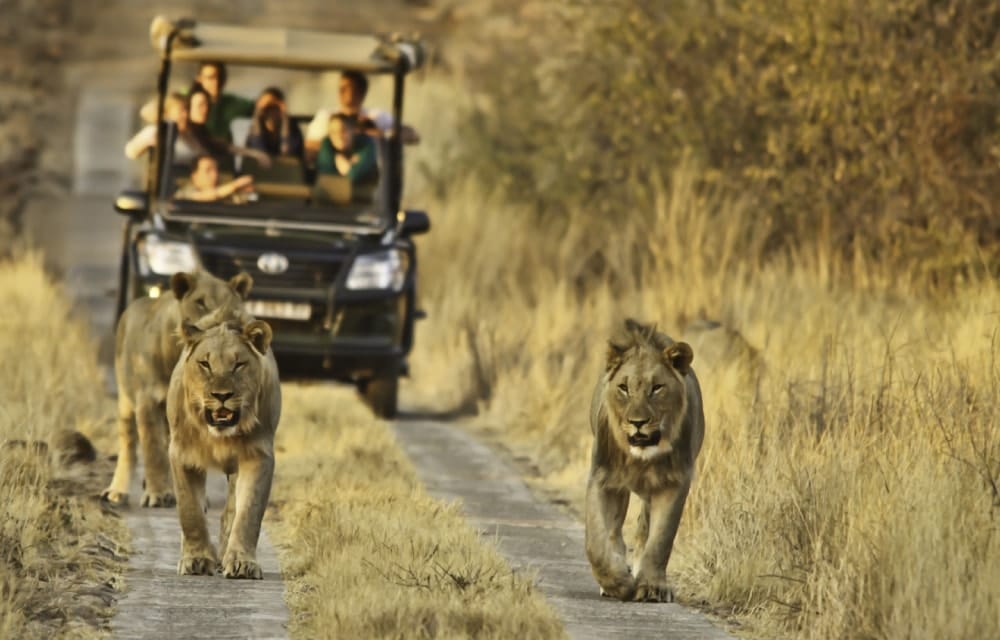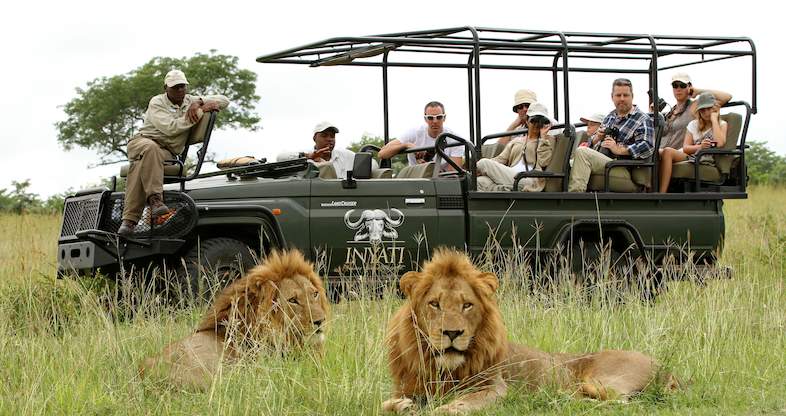Discover Iconic Wildlife and Scenic Appeal with Kruger Park Safaris
Discover Iconic Wildlife and Scenic Appeal with Kruger Park Safaris
Blog Article
Exploring the Majestic Wild Animals and Scenic Landscapes of Kruger Park Safaris: An Extraordinary Experience Awaits
Kruger Park, a foundation of South Africa's natural heritage, provides an elaborate tapestry of wildlife and impressive landscapes, welcoming exploration and engagement with its varied environments. As site visitors venture into this large refuge, they come across not only the renowned Big 5 however also a wide range of other species that improve the park's biodiversity. The association of large savannas and lush timberlands creates a vibrant backdrop for the safari experience. Nonetheless, recognizing the optimum time to see and the subtleties of safari rules can substantially enhance one's trip. What insights wait for those who look for to navigate this magnificent wilderness?
Overview of Kruger Park
One of South Africa's largest and most distinguished game reserves, Kruger National forest covers around 19,485 square kilometers in the northeastern area of the nation. Established in 1898, it is a foundation of preservation efforts, showcasing diverse ecological communities that include savannas, timberlands, and riverine woodlands. The park is home to an excellent selection of wild animals, with over 500 bird types and numerous mammals, reptiles, and plants, making it a biodiversity hotspot.
Kruger National Park is split right into numerous areas, each offering unique landscapes and environments, hence enhancing wildlife seeing chances. Site visitors can check out the park with self-drive courses or guided safaris, permitting an immersive experience in nature. The park's facilities includes properly maintained roadways, remainder camps, and picnic areas, guaranteeing availability for all kinds of tourists.
Additionally, Kruger National forest plays an essential function in education and research study, contributing to international preservation efforts. The park's commitment to lasting tourist advertises liable wild animals watching, promoting a much deeper recognition for South Africa's all-natural heritage. With its spectacular scenery and rich biodiversity, Kruger National forest continues to be a leading destination for adventure seekers and nature fanatics alike.
The Huge Five Experience
Kruger National Park is renowned for offering site visitors the possibility to come across the famous Big Five, that includes the lion, leopard, elephant, buffalo, and rhinoceros. This special possibility to observe these stunning pets in their all-natural habitat draws wild animals lovers and experience seekers from around the globe.
The adventure of identifying the Huge 5 is not simply about the pets themselves but also the context of their environment. Each safari provides a new journey, as guides share understandings into the habits, habitats, and preservation efforts bordering these types. The evasive leopard, usually seen resting in the trees, showcases the beauty of dexterity and stealth, while the enforcing elephant herd highlights the relevance of social frameworks within wild animals communities.

The Cape buffalo, recognized for their uncertain nature, adds an aspect of enjoyment to any type of safari. This immersive experience fosters a much deeper appreciation for wild animals and underscores the significance of protecting these extraordinary creatures for future generations.
Scenic Landscapes and Ecosystems
Frequently commemorated for its spectacular beauty, the landscapes of Kruger National Park supply a varied tapestry of communities that enhance the safari experience. Extending almost 2 million hectares, the park is home to a plethora of habitats, consisting of savannahs, forests, rivers, and wetlands. Each environment is uniquely intertwined, creating a vibrant environment that sustains an array of flora and animals.
The savannahs, defined by i thought about this substantial grasslands populated with acacia and baobab trees, offer ideal grazing grounds for herbivores like wildebeests and zebras. On the other hand, the thick woodlands and thickets use refuge for predators and smaller varieties, promoting an abundant biodiversity. The park's waterholes and rivers are lifelines for wild animals, attracting a wide variety of pets, particularly throughout the completely dry season.
This complex interaction of ecosystems not only sustains the park's iconic wildlife however additionally presents visitors with magnificent panoramas, from rolling levels to remarkable rocky outcrops. Whether traversing open savannahs or exploring thick bushveld, the beautiful landscapes of Kruger National Park assure to leave an enduring mark on every safari enthusiast's heart.
Best Times to See
Recognizing the very best times to go to Kruger National forest can dramatically enhance the safari experience. Kruger park safaris. The park experiences two primary seasons: the dry official site cold weather from May to September and the wet summer season from October to April. Each season provides unique advantages for wild animals watching and landscape recognition
Throughout the completely dry period, animals gather around water sources, making wildlife finding a lot more predictable. The greenery thins out, offering clearer visibility for sightings of the Big 5 and various other types. This period is especially prominent among vacationers because of the beneficial conditions for game drives and assisted walks.
Alternatively, the damp season, characterized by rich landscapes and lively flora, is optimal for birdwatching enthusiasts. Kruger park safaris. Migratory birds are plentiful, and the park ends up being a sanctuary for various avian types. Additionally, this season notes the birth of several young animals, supplying a possibility to witness the interesting characteristics of wild animals communications
Eventually, the most effective time to see relies on individual preferences, whether one seeks the convenience of wildlife sightings or the charm of a growing community. No matter of the season, Kruger National Park assures an extraordinary journey for all who venture right into its wild accept.
Safari Tips and Guidelines

Consider the moment of year when planning your safari. The dry season, from May to September, commonly offers much better wild animals watching possibilities. Wear neutral shades to mix right into the setting, and stay clear of fancy or bright clothes that may stun pets.
Load fundamentals such as binoculars, a video camera, sun block, and insect repellent. Staying moisturized is crucial-- lug enough water for your team. Furthermore, be mindful of the park's wild animals; observe from a distance and never effort to feed or provoke pets, as this can alter their all-natural habits.
Engage with seasoned guides, that supply indispensable insights and boost your understanding of the community. Ultimately, technique your safari with patience and an open heart, permitting for spontaneous minutes that will produce memorable memories in this stunning landscape.
Verdict
In verdict, Kruger Park offers an exceptional opportunity to engage with diverse wildlife and awesome landscapes. The park's commitment to conservation and education and learning enhances the safari experience, allowing site visitors to appreciate the detailed balance of ecosystems. Seeing the Large 5 and exploring different surfaces cultivates a deeper understanding of South Africa's natural heritage. With cautious preparation and adherence to guidelines, an experience in Kruger Park assures to be both enriching and memorable for all who find out here start this trip.
Kruger Park, a cornerstone of South Africa's natural heritage, offers an elaborate tapestry of wildlife and breathtaking landscapes, inviting exploration and involvement with its varied ecological communities.Kruger National Park is separated right into different regions, each offering unique landscapes and habitats, hence improving wildlife viewing opportunities. The park's waterholes and rivers are lifelines for wild animals, attracting a variety of animals, specifically during the completely dry season.
In addition, be mindful of the park's wildlife; observe from a range and never attempt to feed or prompt animals, as this can modify their natural habits.

Report this page